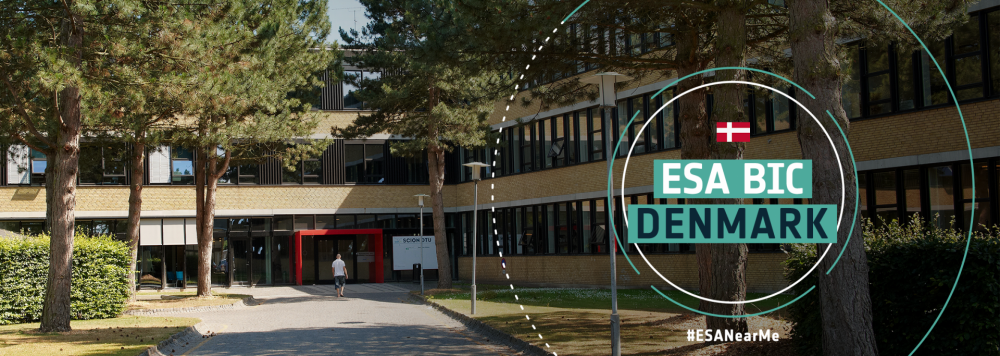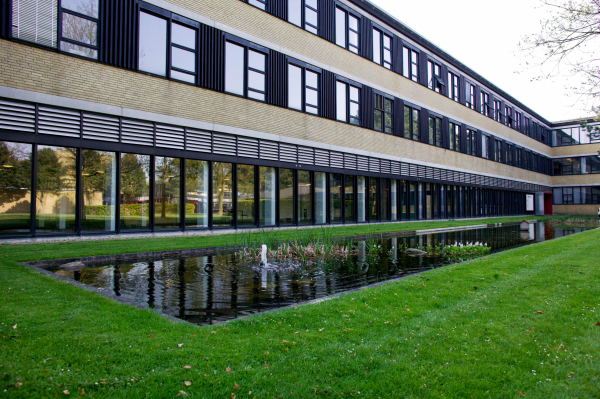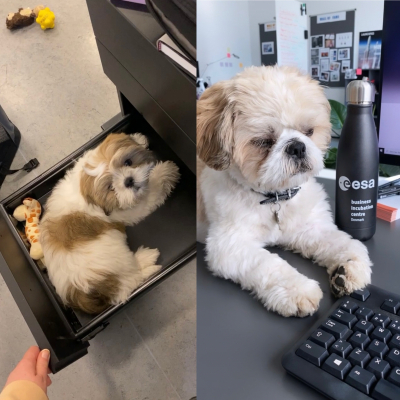SatSense Ltd
Nexus Leeds, Nexus Building Discovery Way
Leeds
LS2 3AA
United Kingdom
Meet ESA BIC Denmark


This story is part of our new Story Series: Meet ESA Space Solutions Network. In this new series, we’re going to introduce you to the great teams across our Network that are using space to develop business applied in daily life. Curious about their highlights and advice? Read on.
Who is ESA BIC Denmark?

ESA BIC Denmark is the 21st ESA BIC of the ESA Space Solutions network of Business Incubation Centres. It was opened in March 2020. The main objective of the Danish ESA BIC is to create and strengthen communities of successful space-related start-ups in Denmark by supporting 40 start-ups during 2020-24. The activities will contribute significantly towards growing clusters of space-based companies in Denmark. ESA BIC Denmark consists of three incubation hubs at The Technical University of Denmark, University of Aarhus and University of Aalborg.
Tell us about the people in your team and what strength/added value you bring through.
In our management team and capital regional hub, we have:
Sune Nordentoft Lauritsen is our Managing Director and is responsible for the daily operations and affairs of ESA BIC DK. Sune has embarked on a horizontal career through several knowledge domains: dot-com bubble startups, science journalism, strategic communications, innovation management, Artic affairs, and entrepreneurship – among others.
Maria Tammelin Gleerup is our Head of Operations and is the organisational backbone of ESA BIC DK. She has a hand in all aspects of the centre, tasked with ensuring it runs successfully and smoothly.
Poul Zimmerman Nielsen is our Space Solutions Manager and is responsible for creating opportunities for cross-fertilisation between ESA BIC start-ups on the one hand and existing space and non-space companies on the other.
Michael Holbech is our Senior Business Developer and supports our start-ups' development in the capital region during the incubation period.
Niels Andersen is our Corporate Relations Manager and helps to maintain and develop positive relations with stakeholders.
Edvard Foss is our Pre-Incubation Lead and creator of our pre-incubation accelerator programme LAUNCHPAD and is responsible for student pre-incubation at ESA BIC DK.
Lisa Bergmann is our Marketing & Communications Lead, with a background in business & economics. She coordinates, creates and executes marketing campaigns, events and all other MarCom activities.
Mira Backes is our Student Assistant of Data Analytics and loves working with data and modelling, so she is part of the ESA BIC DK “data-nerd” team and Hannah Juul Rasmussen. Hannah & Mira are both studying for a BSc in Earth and Space Physics Engineering at DTU.
Carlo is our Doggo Chief Happiness Officer and is responsible for staying fluffy and making the team happy.
At our North Denmark Regional hub at Aalborg University, we have:
Peter Rasmussen is the Regional Hub Manager, and Gert Spender-Andersen is the Senior Business Developer, and Trine Reinholt Andersen is the Communications Officer.

At our Central Denmark Regional hub at Aarhus University, we have:
Christoffer Karoff is the Regional Hub Manager. Henning Sejer Jakobsen and Jonas Brandt are our two Senior Business Developers. Last but not least we have Steen Nielsen who is the Business Relations Officer.
What has inspired you to work in the space industry?
We find it exciting that space brings people with many different backgrounds together to achieve common goals.
Please present between 1 and maximum 4 examples with the name of the start-up, website and a short sentence of what are they doing.
NaviBlind: Navigation system helping the blind find their way
MONTEM: Probing pollution from space
Sternula: Global maritime IoT satellite connectivity for safety and navigation
What is your advice for aspiring entrepreneurs?
Pick your team members as carefully as if you were going to Mars.
Using one word, how would you describe the ESA Space Solutions community?
Comitted.
How would you solve problems if you were from Mars?
Phone home.
What is your website link where the readers can find more about you?
Check esabic.dk to learn more and see the rest of our incubatees.
The European Space Agency Business Incubation Centre Denmark – Partners
ESA BIC Denmark is managed by the Technical University of Denmark in collaboration with ESA Space Solutions, the Danish Ministry for Higher Education and Science, the University of Aalborg, the University of Aarhus, The Danish Industry Foundation and other partners from academia, science parks, industry and Danish governments agencies.
ABOUT ESA SPACE SOLUTIONS
ESA Space Solutions is the go to place for great business ideas involving space in all areas of society and economy. Our mission is to support entrepreneurs in Europe in the development of business using satellite applications and space technology to improve everyday life. ESA Space Solutions is designed to provide multiple entry points such as ESA Business Incubation Centres (ESA BICs), ESA Technology Broker Network, ESA Business Applications Ambassadors and ESA Business Applications programme. Funding typically ranges from €50k to €2M and supports everything from technology transfer, business incubation, Feasibility Studies to large-scale Demonstration Projects.
CITERA - Interdepartmental research Center for Territory, Building, Environment and Restoration of “Sapienza” University of Rome
Piazzale Aldo Moro, 5
00185 Roma RM
Italy
DIAG - Department of Computer, Control and Management Engineering of “Sapienza” University of Rome
Via Ariosto, 25
00185 Roma RM
Italy
Parco Archeologico “Colosseo” - PARCO
Piazza S. Maria Nova, 53
00186 Roma RM
Italy
ENEA Italian National Agency for New Technologies, Energy and Sustainable Economic Development
Lungotevere Grande Ammiraglio Thaon di Revel, 76
00196 Roma RM
Italy



